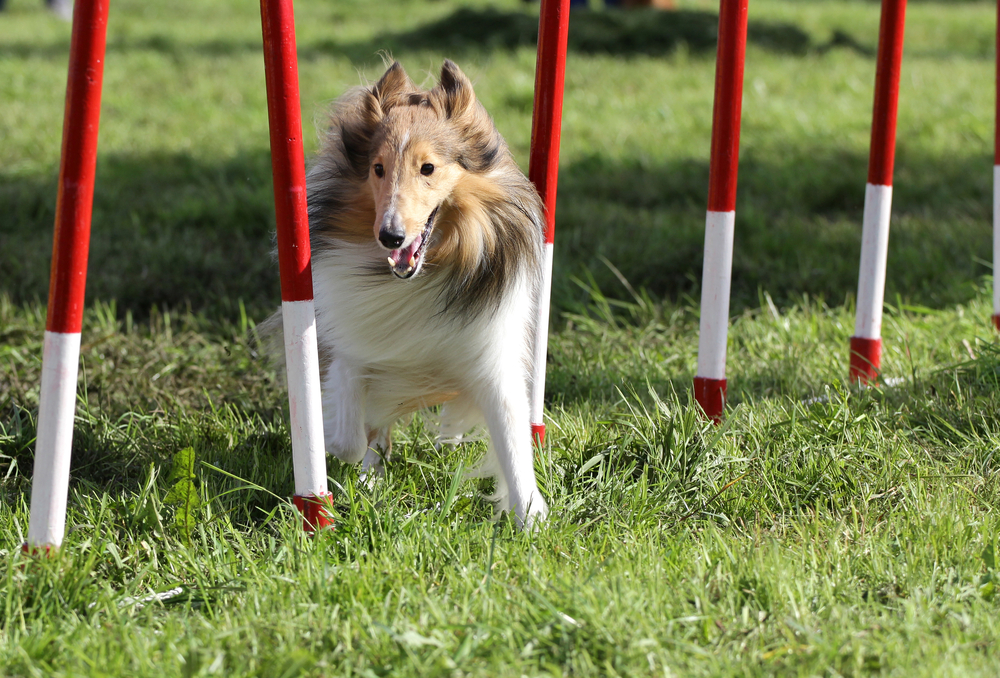Agility
21/11/2016
Following on from our article on flyball some time ago, we thought we’d find out more about another dog activity – agility. A high energy activity like flyball, agility involves racing dogs around a varied obstacle course of jumps, tunnels and other equipment. It provides mental as well as physical exercise and is a great way to make new friends. We found out more from Gill Crawford, co-owner of K9 Pursuits in Newton Aycliffe, County Durham.
1.We know that a dog’s behaviour can suffer without enough physical and mental exercise. Would you recommend agility for dog owners who are struggling with behavioural issues?
Encouraging a dog to participate in agility exercises can help certain behavioural issues. Agility helps to stimulate the mind and body and gives the dog an alternative behaviour to think about. We work with dogs with a variety of problems. When we introduce them to agility, it not only helps to get the dog to focus but also helps to improve he relationship between dog and owner. Owners of dogs with behavioural issues can feel isolated so coming to a class is a way of being part of a group, all be it a small group to start with. A dog that is often anxious and frustrated will start to achieve, which results in the owner becoming more confident when handling. The knock-on effect of this is a handler and dog enjoying each others company and having fun.
2. We see a lot of high energy dogs, such as collies, participating in agility. Do certain breeds fare better at this activity than others?
Agility is a sport that attracts lots of different breeds and in fact there is a Great Dane agility club. Collies dominate most competitive canine sports and this is no different. Other breeds participate but they do need to be agile if the handler wants to compete with the best. Having said this, there are breeds of all shapes and sizes doing agility and enjoying it, such as Whippets, Pointers and Poodles (toy, miniature and standard). Kelpies and German Shepherds are popular breeds for competing. Some dogs are not built for agility though. I would not encourage owners of breeds with short snouts or long spines to compete for example. We can adapt fun agility for these breeds to make it easier for them and fun for their owners.
3. What do you see as the main benefits of agility as an exercise for dogs?
Agility has huge benefits for the dog as long as the dog is properly prepared. It is advisable not to do too much high impact training with young dogs as this can affect their health. Therefore training for agility should not include jumping and high contact equipment for young dogs and puppies under a year or older depending on the breed.
We can teach puppies exercises such as a sit and a send away, walking on different surfaces and targeting to help with future agility training. As the pup matures, we can teach right and left turns and send aways using hand signals as well as verbal cues.
When the dogs are older and ready to start equipment training and eventually moving on to compete, the benefits of agility are tremendous. Dogs that compete need to reach and maintain a fitness level that will enable them to participate without injury. The majority of handlers who compete with their dogs keep their dogs fit and active with exercise and training.
4. How would someone participate in agility?
If someone would like to find out more about agility, possibly the best place to start is at the Kennel Club. The Agility Club also offers advice and support for people who are thinking of taking part in this activity with their dog. Another way is to ask at their local vets for dog training clubs in the area that may offer agility training.
5. Are there any skills that dog owners need to have to take part? How fit do owners need to be?
The skills needed to participate in agility depend on the level the handler aspires to. If a handler wants to compete then they need to be able to train their dog to a good standard of obedience in order for them to eventually be able to negotiate the dog around a course of up to 20 obstacles. When training for fun and to give their dog something to do they still need to have control of their dog, but a lot of fun agility is done on the lead to start with. It is beneficial if the handler is as fit as they can be. On the other hand there are dogs competing at a high standard with a variety of handler abilities and fitness, usually because the dog has been taught to work ahead of them when necessary. All ages and abilities can participate in agility, including competing.
6. Do you recommend a particular diet or dietary supplements to keep dogs in peak condition? Such as a diet high in protein or a bone and joint supplement.
I believe that if a dog is fed a nutritionally balanced diet then supplements should not be necessary as long as the dog is young and fit. As the dog gets a little older, supplements have been known to be beneficial to support the bones and joints. If a dog is handled and trained correctly at the right stages of development then there should be few injuries.
Many thanks to Gill Crawford from K9 Pursuits for her help with this article.
Gilbertson & Page recommend that dogs taking part in high energy activities require a dog food suited to their energy requirements. Gilpa Super Mix is specially formulated for sporting and working dogs. It contains New Zealand green-lipped mussel extract to maintain bone and joint health.



